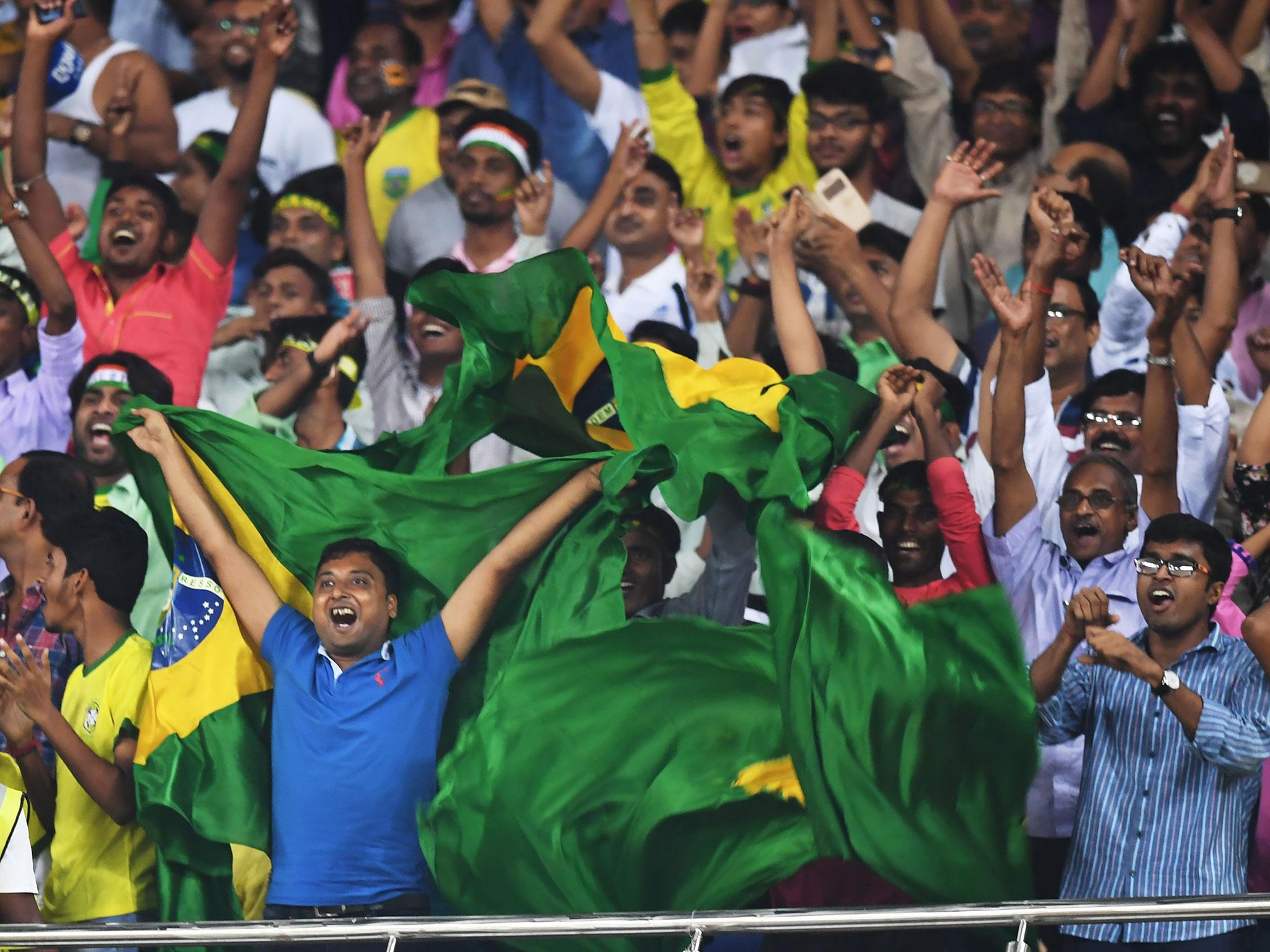Through rain and shine and an enthralling World Cup, India have finally embraced football
The tournament has captured the imagination across the country with the aggregate attendance topping a million people and set to smash the record for a Fifa junior event

In June 2015, five months after Stephen Constantine, an Englishman of Greek-Cypriot descent, had taken charge of India’s men’s football team for a second time, they lost a World Cup qualifier to Guam, a territory that most people couldn’t even locate on a map. Asian Games champions in 1951 and 1962, Indian football went into freefall in the 1970s, at a time when the likes of South Korea’s Cha Bum-kun and Iran’s Nasser Hejazi were putting Asian football on the global map.
Even for a sport that had long since become cricket’s ignored stepsister, the loss to Guam marked a nadir of sorts. The Indian Super League (ISL), backed by some of the country’s richest corporates, had begun a year earlier, but the quest for respectability, even at continental level, appeared to be a pipedream.
On October 11, 2017, India beat Macau 4-1 to seal their place at the 2019 Asian Cup – only the second time since 1984 that they have qualified for the continental showpiece. A week later, Bengaluru FC, a club formed only in 2013, drew 2-2 with Tajikistan’s FC Istiklol in the AFC Cup, Asia’s answer to the Europa League which is open only to the second-tier football nations. They exited the competition 3-2 on aggregate, after a night littered with careless mistakes. Had they not lost their focus, they could have savoured a home tie on November 4, and a chance to put one over Iraq’s Al-Quwa Al-Jawiya, who beat them 1-0 in the 2016 final.
But both the achievements of the national team and the leading club side have paled against the incredible response to the Fifa Under-17 World Cup. With the third-place game (Brazil v Mali) and the England-Spain final still to be played, the aggregate attendance has been 1,228,027, an average of 24,561 per game. That figure has only once been topped at a Fifa junior event – the Under-20 World Cup in Colombia in 2011, with players like Arsenal’s Alexander Lacazette, which was watched by 1,309,929. With three of the most popular teams – Brazil, England and Spain – in action on Saturday, and the Salt Lake Stadium in Kolkata capable of seating over 66,600, it’s safe to say that Colombia will not hold the record much longer.
India, playing for the first time in a Fifa tournament – they declined to make the journey to Brazil for the 1950 World Cup because the federation didn’t have the funds – exited winless from a group that included the United States, Ghana and Colombia. They scored just once, and conceded nine, but were roared on by 147,149 over the three games. Dheeraj, the goalkeeper, Anwar Ali, a robust defender with a Rafa Marquez pony tail, and Jeakson, who scored the only goal, have become household names.
But it was Kolkata’s response to the quarterfinal and the hastily rearranged England-Brazil semifinal – there was torrential rain in Guwahati, the designated host city – that stupefied even hardcore football fans. With Indian participation long over, 66,613 thronged in to watch Brazil beat Germany. Then, after the ticketing website had gone into meltdown with over a million fans trying for semifinal tickets, 63,881 watched Rhian Brewster’s sensational hat-trick down Brazil.
“For India to get even a single point from such a tough group would have been a major achievement,” Joy Bhattacharya, project director for the event, told The Independent. “We didn’t want to make the mistake of positioning the event on the basis of Indian success. We knew that by the time the group stage was over, enough people would be hooked.”
There have been teething troubles, such as no water being available in the top tiers for India’s opening game, following hassles with the stringent security that accompanied Narendra Modi, India’s Prime Minister. But by and large, the fans have savoured the experience of watching Liverpool’s Brewster, Manchester City’s Phil Foden and Barcelona’s Abel Ruiz.
India first began telecasting English Premier League games in the mid-1990s – Liverpool’s 2-0 victory over Arsenal in August 1996, with Steve McManaman scoring both goals, was the first Monday night game to be shown – and La Liga coverage followed a few years later. Now, the big clubs like Real Madrid (CR7), Barcelona (Lionel Messi), Manchester United (David Beckham) and Chelsea (Jose Mourinho) have followings that run to the millions. In that respect, England-Spain is very much the dream final.
And if the media is indeed the bellwether for public opinion, then the times they really are a changin’. Thursday’s main sports page in The Times of India, the country’s leading English-language newspaper, led with “English Lions roar & devour Brazil”. Beneath that was a feature on the red-hot Brewster. You had to scroll all the way down to the bottom of the page to find a report on India’s series-levelling ODI win against New Zealand.
It was no different on the website of Ananda Bazar Patrika, the most-read Bengali newspaper. You can see several pictures of Brewster and his teammates celebrating, and you have to scroll a fair bit to find a picture of Shikhar Dhawan and a cricket report. “I’d like to think Indian football has reached critical mass,” said Bhattacharya.
Brewster and his teammates, who have played five of their six matches in front of their garrulous ‘home’ crowd in Kolkata, will certainly never forget these three weeks in the sunshine and rain.
Subscribe to Independent Premium to bookmark this article
Want to bookmark your favourite articles and stories to read or reference later? Start your Independent Premium subscription today.

Join our commenting forum
Join thought-provoking conversations, follow other Independent readers and see their replies